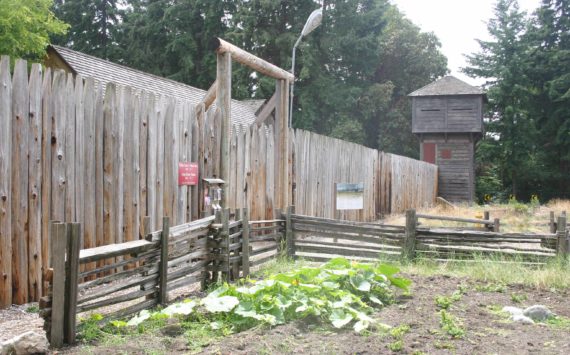‘Diary of the Port Biologist’ exposes seedy side of life as a gull, beaver, otter . . . and scientist
By David Guest
Tacoma Daily Index editor
She’s entertaining, informative and more than happy to share too much information (or TMI if you’re hip). When Jenn Stebbings occasionally opens her diary to the prying eyes of the anonymous masses on the internet, troublemakers are called out, miscreants are shamed and squatters on public lands are pressured to hit the road.
She gets paid to do it. Jenn Stebbings is the Port of Tacoma biologist. Her blog, “Diary of the Port Biologist,” details the fun and amusing side of her job. You know, the part of the job that would make anyone want to be a port biologist.
She’s written song lyrics – non-hits like “Gypsy Moths in Trees,” set to music from “Gypsies, Tramps and Thieves.” (Sorry, Cher, but it was funny). Stebbings exposed the unauthorized, but-what-can-you-do-about-it? harvesting of trees on port property by a sharp-toothed beaver and felt obligated to issue an eviction notice to a family of seagulls found squatting on top of a cargo container.
“It is really fun to write, and to educate the public on what happens down here at the port,” Stebbings said of her blog. “It makes me look at my job with a different perspective.”
So what is her job?
According to the port, Stebbings is “responsible for all things associated with natural resources, habitat sites and living organisms.” Put in those terms, it might make one wonder why anyone would want to be a port biologist.
The Port of Tacoma controls over 2,700 acres of waterfront and industrial property, a large portion of which suffered from decades of contamination. The toxic waste from industries in a bygone era was the result of a combination of a lack of knowledge and technology, lack of laws to prevent it, and the lack of moral and ethical behavior from some of Tacoma’s early industrialists.
The Port of Tacoma alone has spent $160 million over the past couple of decades to clean up the toxic soup that has leached into the soil, groundwater and tide flat sediment around Commencement Bay. In the next few years, another $80-$100 million may be spent to clean up sites that make up the port’s 200 acre short-term wish list. In reality, the cleanup effort will take 100 years or more.
Stebbings might not be able to spend the next century watching over the welfare of the port-controlled tidelands and waterways and the permanent and transient residents that call them home, but her blog should continue to inform and entertain for a little while longer.
“When my coworkers told me that there was a pair of Canada geese making a nest in one of our stormwater downspout treatment boxes, the first thing that came to mind was, ‘only at the port!’, Stebbings said. “When their first set of eggs disappeared without a trace, we knew we had a story on our hands.”
A story with an unfortunate ending — river otter, breakfast — you get the idea.
Stebbings manages to relay those stories in such a creative, entertaining way that you go away thinking that she has the best job in the whole world.
On the web: www.portoftacoma.com/community/environment/diary-port-biologist








